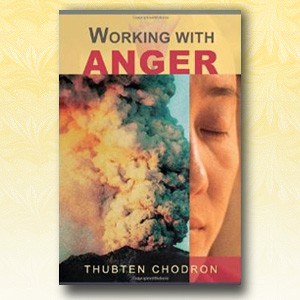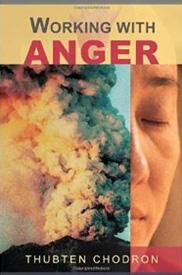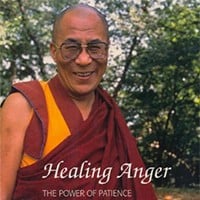Subduing anger
An excerpt from Working with Anger

One summer His Holiness the Dalai Lama spoke to a Los Angeles audience that included a group of inner city youth in fatigues, their camp uniforms, together with their counselors. After his talk, one of the youths asked His Holiness, “People get right in my face and provoke me. How can I not fight back?” She was challenging him, but quite sincere in her request.
His Holiness looked her in the eye and said, “Violence is old-fashioned. Anger doesn’t get you anywhere. If you can calm your mind and be patient, you will be a wonderful example to those around you.” The audience clapped, but the girl remained standing, looking back at him. She wasn’t yet satisfied.
The Dalai Lama went on to describe how so many great people—Martin Luther King, Mahatma Gandhi, and Jesus, for example—remained peaceful in the face of violence and adversity. Many of them experienced difficulties when they were growing up. “Even I,” he said. “My youth was fraught with conflict and violence. Yet all of these people expounded non-violence and love for others, and the world is better for their contributions. It’s possible for you to do this too.”
He then motioned for the girl to come up and shake his hand. As she approached him with her hand outstretched and a nervous smile on her face, the Dalai Lama opened his arms and hugged her. The girl returned to her seat, beaming.
After the talk, one of the sponsors asked the teenagers if they would share their experience. A burly, tough-looking young man came to the microphone with a huge smile on his face. “Phew,” he said, “You must be able to hear my heart beating from where you’re sitting! I’ve seen the Dalai Lama on TV and in the magazines and thought he was pretty cool, but I just can’t describe what it feels like to have met him!” and he touched his heart.
A Tibetan monk who had escaped from Communist-occupied Tibet just a few years earlier told me his story. His family was a wealthy, prominent one in the area of Tibet where he grew up. After the Communist occupation of Tibet in 1950 and the subsequent abortive uprising in 1959, his family’s house was confiscated and made into a jail. Because his family were landowners and because he was a monk, he was arrested by the Chinese Communists. Then, he was imprisoned in a jail that had once been his home. He and the other inmates were allowed to go to the toilet outdoors twice a day, but otherwise they had to stay in the house, which now had broken windows and none of its former comforts. Most people would have burned with rage at the injustice and humiliation, but this monk told me that he tried to use his time wisely, doing his meditation practices to improve the state of his mind. Although he was deprived of all his religious implements, he silently recited the texts he had memorized and contemplated their meanings. In this way, he familiarized his mind with attitudes and emotions that lead to enlightenment and avoided the pitfalls of anger. When I talked with him, I detected no sign of resentment against the Chinese Communists. He had a profound love of life.
Stories such as these lead us to wonder, “How do they do it?” They are human beings just like us, and although they have faced circumstances much worse than a great many of us have faced—including exile, imprisonment, torture, and the loss of many loved ones—they do not burn with rage or seek revenge. This book is largely a collection of Buddhist methods for subduing and preventing anger that have worked for the Dalai Lama, the monk above, and many others.
There is nothing particularly “Buddhist” about these methods. In fact, many of the Buddha’s teachings are common sense, not religious doctrine, and common sense is not the property of any religion. Rather, these methods show us reasonable and beneficial ways to live. No matter what our religion, looking at our minds and learning to work with our anger are helpful.
Venerable Thubten Chodron
Venerable Chodron emphasizes the practical application of Buddha’s teachings in our daily lives and is especially skilled at explaining them in ways easily understood and practiced by Westerners. She is well known for her warm, humorous, and lucid teachings. She was ordained as a Buddhist nun in 1977 by Kyabje Ling Rinpoche in Dharamsala, India, and in 1986 she received bhikshuni (full) ordination in Taiwan. Read her full bio.



